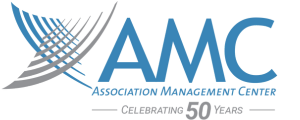
12 Content Marketing Terms to Know
Content marketing—let’s start with this one. HubSpot defines content marketing like this:
“a marketing program that centers on creating, publishing, and distributing content for your target audience—usually online—the goal of which is to attract new customers.”
It’s the overarching strategy that considers all of an organization’s content and acknowledges the corporate website as the new storefront, the “hub,” in the business of gaining customers. It’s a philosophy of engaging customers through content curation to generate and convert leads.
The areas of mastery for a successful content marketing strategy are many. Modern marketing requires knowledge of an endless list of concepts and terms, many of which have entered the lexicon only recently. This list will hopefully answer some lingering questions you’ve had and help you polish your own strategy.
A/B Testing (or Split Testing)
This type of test is a data-based method of analyzing the performance of versions of a webpage. Because “best practice” is a moving, unpredictable target in the digital world, A/B testing allows you to check your experience and preferences against actual user behavior. Ideally, small elements of a page are tested rather than major ones. For example, you might test different headlines or button colors rather than vastly different page layouts or whole website designs.
Analytics
A shockingly large amount of data is available on website user behavior. With the right filtering and interpretation of this data, analytics can provide useful insight and support for decision making. Alexa has a great post on analytics terms, but I’ve offered a few key terms below.
- Bounce rate reflects the percentage of users who arrived at that particular page and left your website without visiting another page. If a particular page is a final destination, somewhere visitors are intended arrive to consume information without any follow-up action, a high bounce rate may not necessarily be a bad thing. If your objective for this page is to inspire a purchase or further exploration, a high bounce rate can indicate something may need to be adjusted on that page.
- Direct traffic indicates the segment of visitors who arrive at your website by typing the exact URL into the address bar of a browser (rather than through a search).
- Organic search traffic indicates the segment of visitors who arrive at your website by clicking on a link found on the results page of a search engine like Google or Bing.
- Referral traffic indicates the segment of visitors who arrive at your website by clicking a link on another website. Social referrals are those who came to your site via a link on social media.
Call to Action
This refers to the action you want the visitor to take, usually represented by a button or link, usually with the goal of getting your content shared, a product purchased, or a lead generated.
Content Curation
Much like a museum curator is responsible for a museum’s art collections, content curation is the active management of an organization’s content across all delivery vehicles, especially the website. It involves continual and attentive oversight on the timeliness, relevance, accuracy, and performance of content, old and new, original and aggregated.
Conversion, Conversion Rate Optimization (CRO)
The measure of conversion is dependent upon the objective of a particular campaign, web page, etc. It’s the percentage of users who complete the action you want them to take, whether it’s filling out a form for a free PDF download, registering for an event, or purchasing a product. Even if the ultimate goal won’t directly generate revenue, the goal should be measureable and conversion should be the ultimate goal. Conversion scientist Brian Massey explains this concept in a video on Unbounce’s Conversion Marketing Glossary.
Editorial Calendar
This tool helps you plan and schedule your content publication. It provides space for all the relevant information about a piece of content and should, at the very least, include its topic, target persona(s), delivery vehicle, delivery date, author, and goal. It can be as simple as an Excel or Word document with these exact column titles.
Keyword, Keyphrase
These are words or phrases users enter into search engines when looking for content on a specific topic. Certain keywords and phrases are common in target audiences and customer bases, and research into those that are most prevalent can help increase your page’s ranking on a search engine results page. Using keywords that are too broad can be a disadvantage because of too much competition, and using those that are too specific shrinks your pool of users. Keywords can also help provide insight into the kind of content that your customers are looking for that you may not currently have. Avoid overstuffing your content with keywords, especially those that aren’t very relevant, because search engines may penalize you for this tactic. Keyword Tool is a great resource for keyword suggestions and validation.
Landing Page
This term refers to a stand-alone page—usually bearing a look distinct from the rest of your website, even if it “lives” on your website—created for a specific campaign that users are directed to and has a focused conversion goal of generating leads (“Fill out this form to receive your free download” or “Register now”) or to encourage conversion through additional education or information (“View the full schedule” or “Browse our packages”). Its design and content make the call to action very clear by limiting options (no global navigation).
Metadata
Metadata includes description text that is not displayed on a webpage but that informs search engines on what that content is about. This content is found within the HTML code and is a particularly effective search engine optimization (SEO) strategy for images and videos.
Persona
A persona is an imagined user profile based on actual customer demographics that is used when developing content as a means to better target messaging. Personas help you in targeting messaging more effectively by segmenting your audience into recognizable and easy-to-grasp “individuals.”
Search Engine Optimization (SEO)
This term refers to strategies used to help a website or webpage achieve a high rank in search result pages. Because 60% of all organic search clicks go to the top 3 organic search results, it is a highly effective and beneficial for website performance to aim for high search engine result rankings. SEO also has a higher return on investment, considering SEO leads have a 14.6% close rate, while outbound leads (eg, direct mail) have a 1.7% close rate. Here are a few key factors that contribute to SEO:
- External links are hyperlinks on your page to other websites. The more connections your website has with other websites, the better.
- Inbound links are hyperlinks to your website from other websites, which are extremely effective for improving search result rankings.
- Internal links are hyperlinks on your website that direct users to other pages on your website. These links help search engines discover content on your website.
- Tags are signals embedded in HTML code that indicate undisplayed information about that content. They include ALT-tags, metatags, and headline tags, among others.
Usability, User Experience (UX)
User-centered web design incorporates intuitive navigation and ease of use for visitors, known as “usability” or “user experience.” This type of web design relies on user behavior data and feedback from the end user rather than focusing solely on perspectives from within an organization. By focusing on the experience of visitors who come to your site instead of those who manage your site, you are more likely to improve the site’s performance and, in turn, conversions.
June Pinyo is a managing editor in AMC’s Creative Media Services department and co-lead for the AMC Content Managers User Group. For more tips and conversation on content marketing, follow June on Twitter.
Photo Credit: “12” by Leo Reynolds is licensed under CC BY-NC-SA 2.0.


